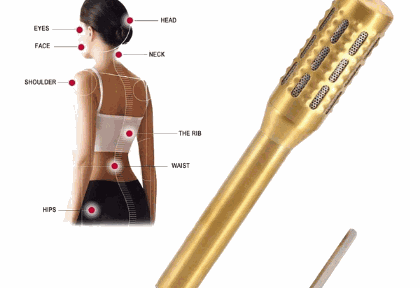
Moxibustion is a form of therapy that entails the burning of mugwort leaves. This is a small, spongy herb that is believed to enhance healing with acupuncture. As such, the leaves are burnt close to the skin’s surface using a stick to apply heat.
The practice is derived from Chinese medicine. Its purpose is to strengthen the blood, stimulate the flow of Qi or energy, and maintain good health.
According to Chinese medicine, an increase in the circulation of Qi can help your body deal with a broad range of issues, including digestive problems and chronic pain.
What Does the Process Entail?
Your moxibustion therapist can apply the technique directly or indirectly. When used directly, the moxa cone rests on the site of treatment on your body. The practitioner ignites one end of the cone and leaves it to burn slowly. Once your skin starts to turn red and you begin to feel the heat, the therapist removes the cone. In other cases, the practitioner places the moxa on the acupuncture needle and ignites it. The moxa will burn on the needle until it's extinguished. The heat is transferred to the acupuncture point through the needle.
Indirect moxibustion is more common and also a safe option. In this approach, the burning moxa doesn’t come into direct contact with your skin. Instead, the practitioner holds it about an inch away from your body. Once the skin becomes warm and red, they will remove the moxa from near your skin.
Another indirect use of moxa entails using an insulating layer of salt or garlic. The therapist places one of these items between the cone and your skin. Alternatively, they can also fill moxa boxes with the ingredient, ignite it, and put it on the body.
Uses of Moxibustion
Alternative health practitioners say that the heat generated through moxibustion can help to increase the flow of energy throughout the body. This happens through some pathways known as meridians. Chinese traditional medicine considers the stimulation of energy essential to help your body achieve health and wellness.
Moxibustion is founded on the belief that blockages in the flow of energy lead to mental and physical health problems. Because of this, it’s used to treat:
Back pain
Arthritis
Headaches
Migraines
Muscle stiffness
Tendonitis
Ulcers
Fatigue
Infertility
Menstrual cramps
Cancer
Digestive problems
What can I expect to feel?
It is not uncommon for patients receiving moxibustion to report a sudden flooding of warmth that quickly radiates along a specific pathway (usually corresponding with the jing luo channel that is being treated) away from the site of application. This is a good result, as it indicates the arrival of the Qi and signals that the flow of Qi and xue has been freed in the channel.
What does it smell like?
There is a small inconvenience associated with moxibustion: the smoke and odor. Although there are so-called smokeless varieties of moxa, the preferred true moxa (made from mugwort) does produce a lot of smoke when burned. Most TCM clinics are well equipped with a good ventilation and air purification system, so this is not a big problem. However, the lingering odor produced from burning mugwort unfortunately smells somewhat like marijuana. Most TCM practitioners in the United States, place small signs around their office informing patients and visitors about the true nature of the odor that they may be noticing.
